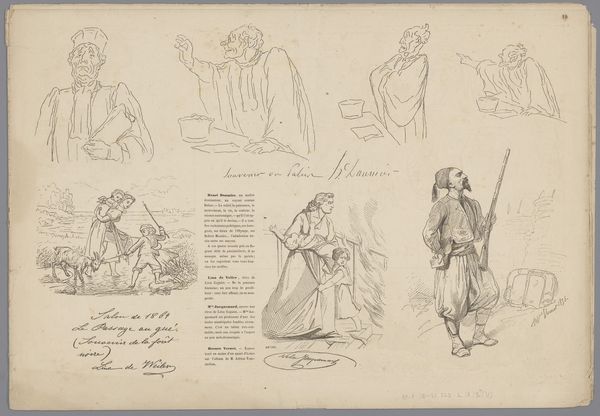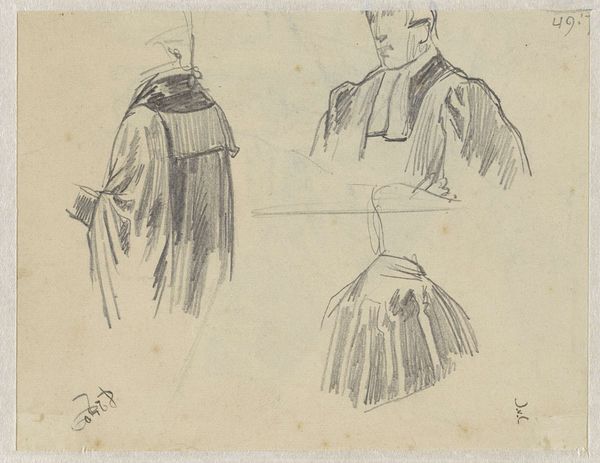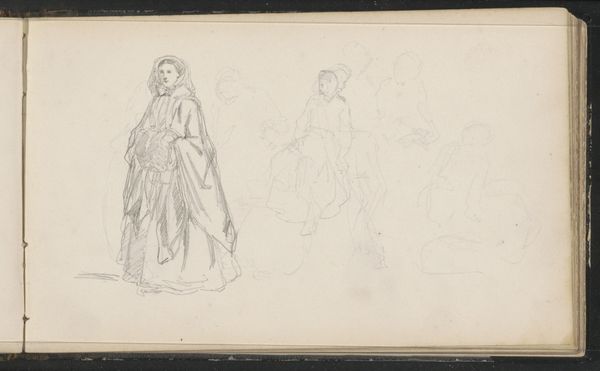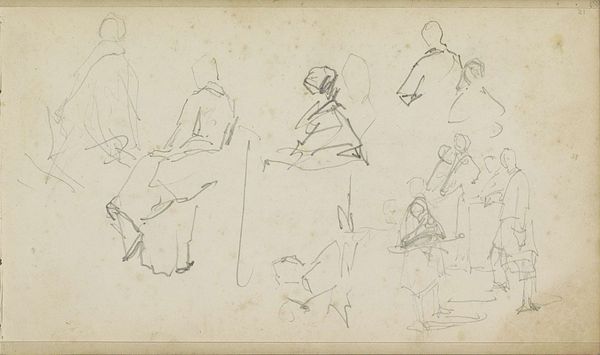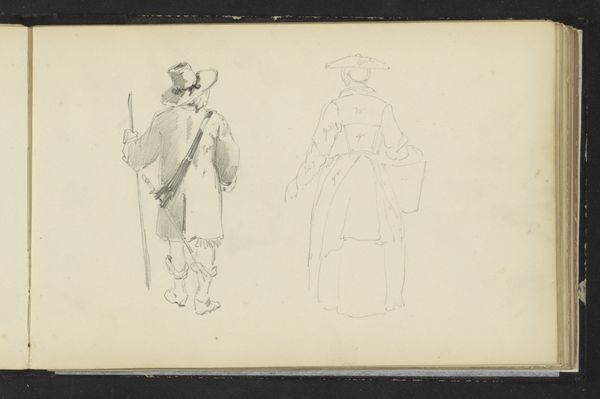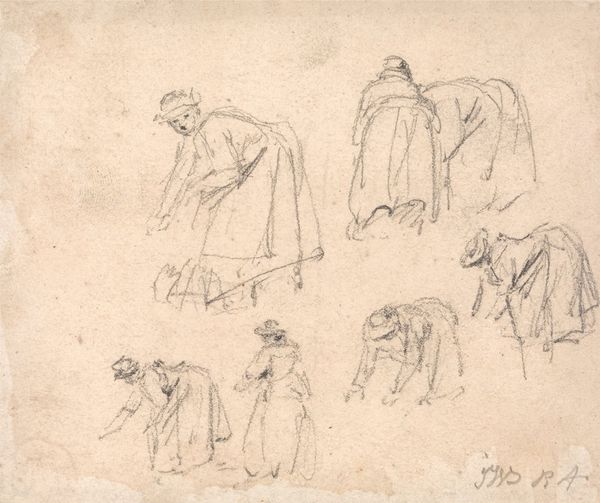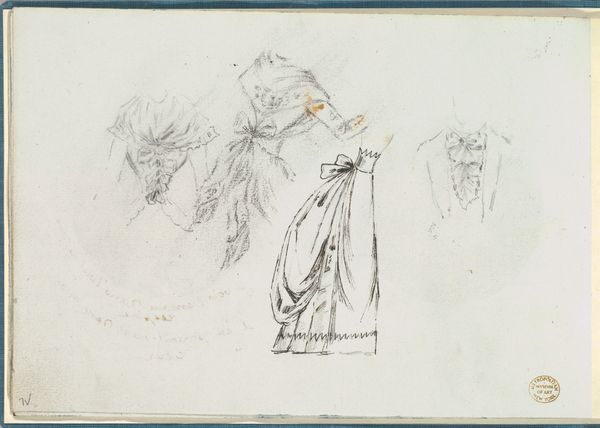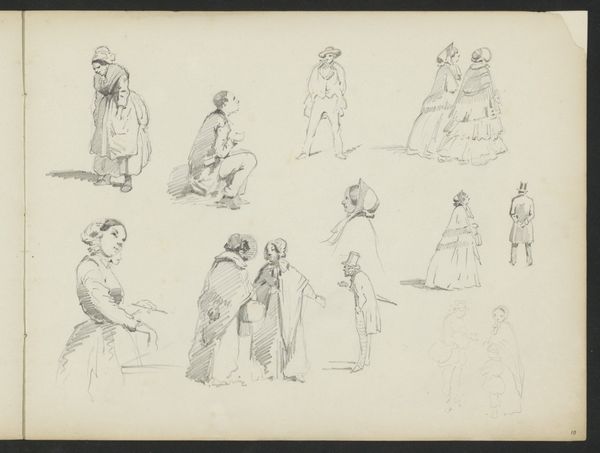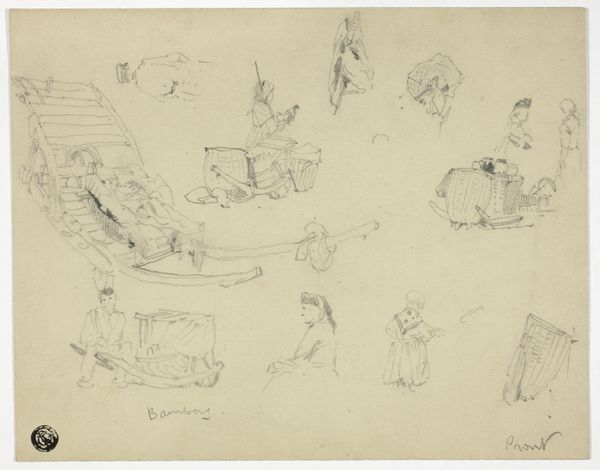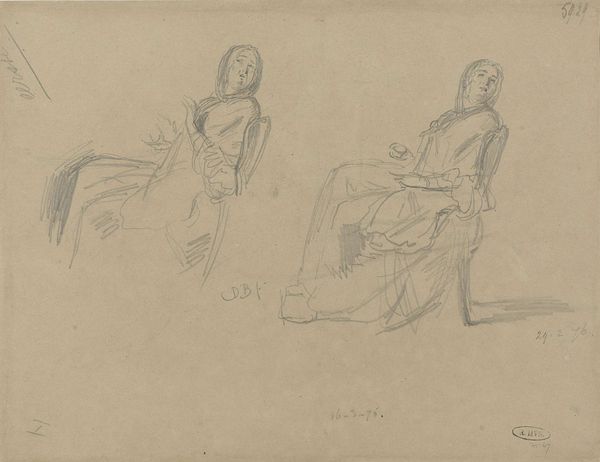
drawing, paper, ink, pencil
#
portrait
#
drawing
#
amateur sketch
#
light pencil work
#
quirky sketch
#
narrative-art
#
incomplete sketchy
#
figuration
#
paper
#
personal sketchbook
#
ink
#
idea generation sketch
#
sketchwork
#
romanticism
#
pen-ink sketch
#
pencil
#
sketchbook drawing
#
genre-painting
#
initial sketch
Copyright: Rijks Museum: Open Domain
Curator: Looking at this sketch, I immediately appreciate the raw simplicity of the lines, the artist really captured a fleeting moment with such economy of means. Editor: Yes, the bare bones of representation. We are in front of "Woman with Cap and Apron, Seated by a Wicker Basket," an 1840 work made with pencil and ink on paper by Johannes Tavenraat, housed at the Rijksmuseum. Curator: Well, beyond the immediacy, it speaks to a broader social context. Tavenraat captured a worker engaged in her daily routine. One can practically feel the weight of her labor, the modesty of her attire telling a story about the material conditions of her life. Editor: True. And yet, the composition—the strategic placement of figures, the subtle variations in shading—creates a compelling rhythm. Note how the artist played with contrasting outlines, leaving some parts of the sketch unfinished. Tavenraat really considered how form communicates content. Curator: I am far more interested in her clothes and that basket; these weren’t just generic forms. This woman’s garments indicate her belonging to a particular social class and likely even a specific region. These clothes and tools tell us a great deal about how ordinary labor shaped cultural identity and the material world. Editor: But consider the gaze of the main figure; the soft inclination of her head and the lines defining her posture imbue the figure with certain quiet dignity. Don’t you see that regardless of who this woman might be, she's composed of well balanced forms of the face, and elegant representation of shapes. The way it looks makes us stop and stare, wouldn’t you agree? Curator: Sure. But to only look at aesthetics in art about laborers, the kind of population which keeps all of our social structures functioning smoothly—would only provide a superficial experience, to my understanding. Editor: Perhaps... Although in all fairness, both the aesthetic qualities of the sketch and its function as a potential idea should be considered, to broaden our knowledge and perspectives on Dutch Romanticism. Curator: Agreed. Viewing artworks this way enables a multifaceted engagement, allowing the drawing to reveal itself layer by layer. Editor: It’s this dialectic, I feel, that makes experiencing works like these profoundly meaningful.
Comments
No comments
Be the first to comment and join the conversation on the ultimate creative platform.
